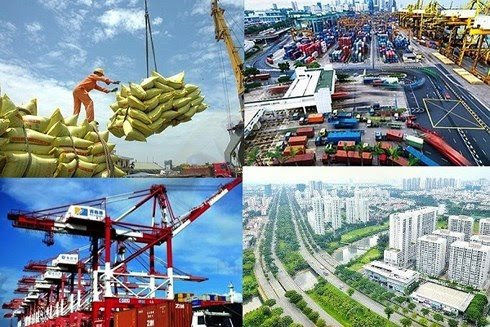Viet Nam has been a development success story: WB
VGP - Viet Nam has been a development success story. Thanks to its solid foundations, the nation's economy has proved resilient through different crises, noted the World Bank (WB).

In its latest report released in March, the WB said, economic reforms since the launch of Doi Moi in 1986, coupled with beneficial global trends, have helped propel Viet Nam from being one of the world's poor nations to a middle-income economy in one generation.
Between 2002 and 2022, GDP per capita increased 3.6 times, reaching almost US$3,700. Poverty rate declined from 14 percent in 2010 to 3.8 percent in 2020.
According to the bank, Viet Nam's economic growth is projected to reach 5.5 percent in 2024 and 6 percent in 2025.
Growing at 2.5 to 3.5 percent per year over the past three decades, the agriculture sector has supported economic growth and ensured food security. It contributed 13 percent of GDP and 29 percent of employment in 2021.
Health outcomes have improved along with rising living standards. Infant mortality rate fell from 32.6 per 1,000 live births in 1993 to 16.7 in 2020.
Life expectancy rose from 70.5 to 75.5 years between 1990 and 2020. Viet Nam's universal health coverage index is at 73-higher than regional and global averages-with 87 percent of the population covered by the national health insurance scheme.
Viet Nam's average duration of schooling is 10.2 years, second only to Singapore among the ASEAN countries. Its human capital index is 0.69 out of a maximum of one, the highest among lower middle-income economies.
Access to infrastructure services has increased dramatically. As of 2019, 99.4 percent of the population used electricity as their main source of lighting, up from just 14 percent in 1993.
Access to clean water in rural areas has also improved-up from 17 percent in 1993 to 51 percent in 2020.
Viet Nam has grown bolder in its development aspirations, aiming to become a high-income country by 2045.
The nation also aims to grow in a greener, more inclusive way, and has committed to reducing methane emissions by 30 percent and halting deforestation by 2030 while achieving net zero carbon emissions by 2050.
To challenges, in the upcoming time, the WB suggested Viet Nam dramatically improve its performance to implement policies particularly in finance, environment, digital transformation, poverty/social protection, and low-carbon infrastructure.
Adapting to climate impacts and pursuing a growth strategy that steers the economy away from carbon-intensive production will help the country achieve its climate objectives while expanding its GDP per capita by around 6 percent a year–the average rate needed to become a high-income country by 2045, the bank recommended./.

